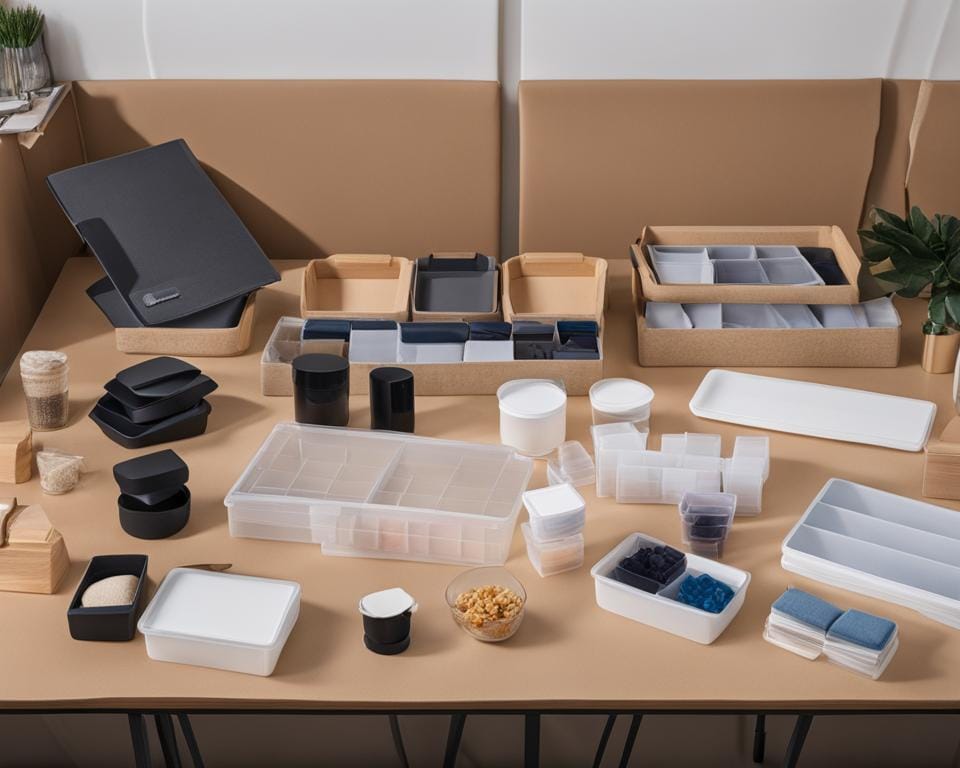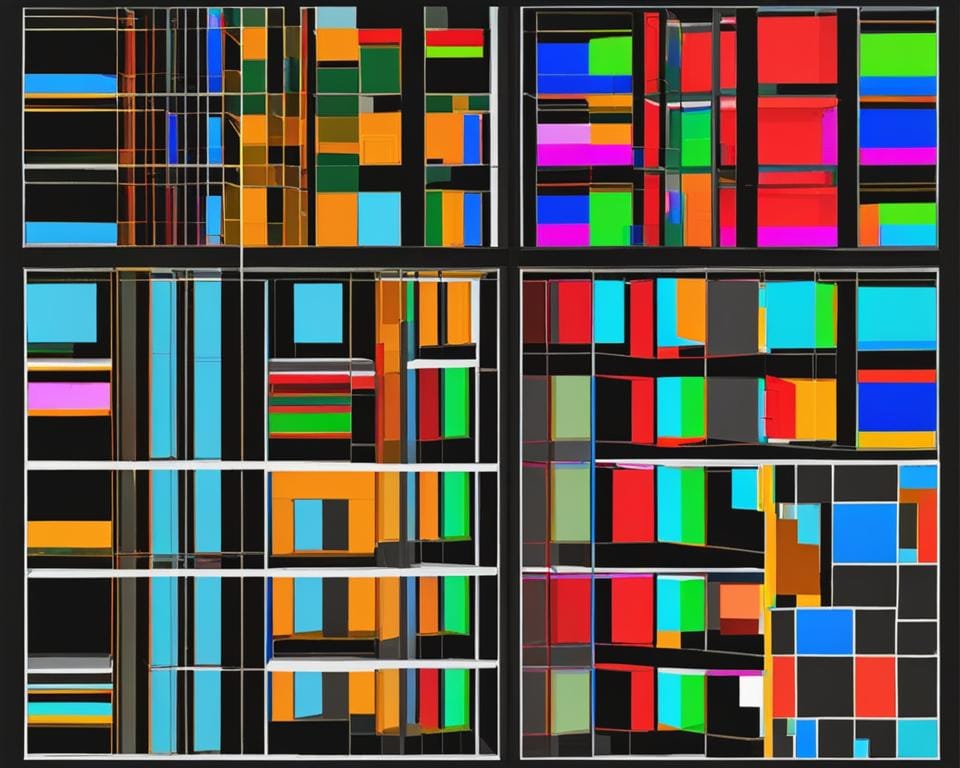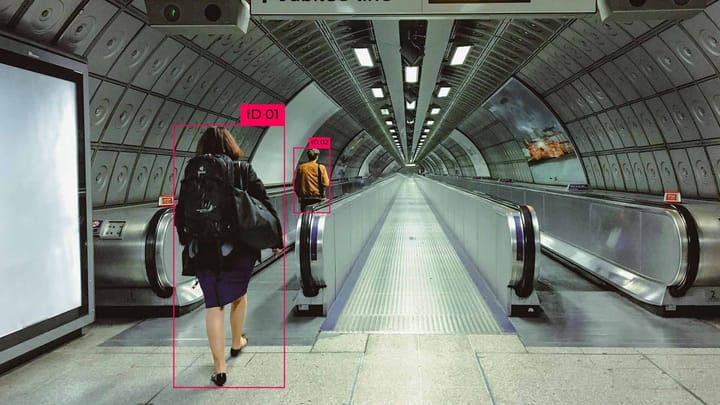Advantages of Using Tight Bounding Boxes in Object Detection

In the field of computer vision, bounding boxes play a crucial role in tasks like object detection. These rectangular region labels define the position and size of objects within an image. When it comes to supervised machine learning, opting for tight bounding boxes brings numerous advantages. Unlike other forms of bounding boxes, tight bounding boxes accurately capture the boundaries of objects without cutting off any part. They provide better localization information to learning algorithms, resulting in high-performing object detection models.
Create an image of a computer screen displaying an object detection algorithm using tight bounding boxes. Show multiple images with objects of varying sizes and shapes being correctly identified and highlighted with the tight bounding boxes. Add arrows pointing to the boxes to emphasize their accuracy and efficiency. Make the background of the screen a neutral color to draw attention to the objects and bounding boxes.
Key Takeaways:
- Tight bounding boxes accurately capture the boundaries of objects and provide better localization information.
- They are essential for training high-performing object detection models.
- Bounding boxes are rectangular region labels used for computer vision tasks.
- Tight bounding boxes are widely used in supervised machine learning.
- They define the position and size of objects in an image.
Uses of Bounding Boxes
Bounding boxes are versatile tools extensively used in computer vision for various tasks such as object detection and tracking. Their adaptability and compatibility with machine learning algorithms make them essential in training high-performing models.
Object Detection: Bounding boxes play a crucial role in object detection by identifying and localizing objects within an image. They enable the prediction of object boundaries, making it possible to detect and classify objects of interest, such as pedestrians, cars, and animals. These bounding boxes serve as labels for training models to recognize and locate objects accurately and efficiently.
Object Tracking: Bounding boxes also find significant applications in object tracking, where they are used to track the movement and position of objects over time. This allows for applications like video surveillance, sports analytics, and autonomous vehicles, where the continuous tracking of objects is essential for real-time decision-making.
By providing an efficient representation of object location and extent, bounding boxes facilitate the development of robust computer vision models capable of accurately detecting and tracking objects in various scenarios.
Bounding Boxes vs. Segmentation
While bounding boxes are widely used in computer vision tasks, it is important to note the distinction between bounding boxes and segmentation techniques. Bounding boxes primarily focus on object detection and localization, providing a simplified representation of an object's location and boundaries.
On the other hand, segmentation techniques, such as semantic segmentation or image segmentation, aim to precisely identify and outline object boundaries at pixel level. These techniques are preferred when precise boundary information or instance separation is required.
Based on the specific task and requirements, choosing between bounding boxes and segmentation techniques becomes crucial in developing accurate and efficient computer vision models.
| Use Cases | Bounding Boxes | Segmentation |
|---|---|---|
| Object Detection | Efficient and simpler representation | Precise object boundaries |
| Real-time Applications | Lower computational requirements | Higher computational requirements |
| Instance Separation | N/A | Accurate separation of instances |
Best Practices for Labeling Bounding Boxes
Accurate labeling of bounding boxes is crucial for training high-performing object detection models. Following best practices ensures consistent and reliable annotation of bounding boxes, leading to improved model performance and accuracy. The following are key recommendations for effective bounding box labeling:
1. Consistent Labeling
It is essential to maintain consistent labeling of the same object class across all images in the dataset. This ensures that the model learns to recognize and detect objects consistently, regardless of variations in appearance or context. Consistency in labeling helps the model generalize better and make accurate predictions on unseen data.
2. Labeling Tight Boxes
Labeling tight bounding boxes around objects is important for providing better localization information to learning algorithms. Tight boxes accurately capture the boundaries of objects without excluding any essential parts. This level of detail enables the model to precisely identify and distinguish objects, improving its overall performance.
3. Overlapping Boxes and Occlusion
In cases where objects overlap or are partially occluded, it is recommended to draw individual bounding boxes for each object. This ensures that each object is properly labeled and separately identified by the model. By labeling overlapping or occluded objects individually, the model can learn to detect and localize each object with greater accuracy.
In addition, when an object is partially visible or truncated, it is important to label only the visible parts of the object. This prevents confusion and ensures that the model focuses on the visible components of the object for accurate detection and localization.
By following these best practices, annotators can create high-quality bounding box annotations that contribute to the development of robust and accurate object detection models.

A bird's-eye view of a workspace with a person meticulously labeling tight bounding boxes around objects of various sizes and shapes. Each box is labeled with their corresponding object class, using consistent and clear outlines with minimal overlap. The workspace is well-lit with natural light, and the person is wearing gloves to protect the fragile items being labeled.
Bounding Boxes Vs. Segmentation
Bounding boxes and semantic segmentation are two commonly used labeling techniques in computer vision tasks. While both methods serve the purpose of object detection and localization, they differ in their approach and level of detail.
Bounding boxes, as mentioned in Section 2, provide a simple and efficient representation of an object's location and extent. They are rectangular regions that define the position and size of objects in an image. Bounding boxes are widely used in object detection tasks, allowing machine learning models to identify and localize objects within an image. They are computationally efficient and suitable for real-time applications, making them a popular choice in industries like autonomous vehicles and video surveillance.
On the other hand, semantic segmentation provides a pixel-level annotation of objects in an image. It involves labeling each pixel with a specific class, allowing for more precise information about object boundaries and instance separation. Semantic segmentation can capture fine-grained details in an image and is often used in applications where precise object boundaries are essential, such as medical imaging and autonomous navigation systems.
While bounding boxes are quick and easy to label, semantic segmentation requires more time and effort due to the pixel-level annotation. However, the level of detail provided by semantic segmentation can offer more accurate object representation and segmentation. The choice between bounding boxes and semantic segmentation depends on the specific requirements of the computer vision task, considering factors such as computational efficiency, level of detail needed, and application domain.
Comparison Table: Bounding Boxes Vs. Semantic Segmentation
| Criteria | Bounding Boxes | Semantic Segmentation |
|---|---|---|
| Annotation Method | Rectangular bounding regions | Pixel-level annotation |
| Level of Detail | Coarse-grained | Fine-grained |
| Computational Efficiency | High | Lower |
| Instance Separation | No | Yes |
| Application | Object detection, real-time applications | Precise object boundaries, instance separation |
As shown in the comparison table above, bounding boxes provide a simpler and more efficient representation of objects, while semantic segmentation offers more detailed information at the pixel level. The choice between the two labeling techniques depends on the specific needs of the computer vision task and the balance between computational efficiency and level of detail required.

Create an image comparing the advantages of tight bounding boxes to semantic segmentation in object detection. Show the precision and accuracy of tight bounding boxes in detecting objects, and contrast it with the more complex and nuanced approach of semantic segmentation. Use contrasting colors and bold lines to highlight the key differences between these two methods.
Case Study: Vehicle Detection
Vehicle detection is a critical component of traffic monitoring systems, enabling efficient traffic flow management and enhanced safety measures. The use of bounding box annotation plays a crucial role in accurately detecting and localizing vehicles in traffic surveillance images or videos. This case study explores the data collection and model training processes involved in implementing vehicle detection with bounding boxes.
To begin, a large dataset of images and videos from various traffic surveillance cameras is collected. These images and videos capture different scenarios and variations in lighting, weather conditions, and vehicle types. The dataset is then carefully annotated with bounding boxes around each vehicle to establish ground truth labels for training the model.
Once the dataset is annotated, it is split into training and validation subsets. The training subset is used to train a deep learning model, such as a convolutional neural network (CNN), using popular frameworks like TensorFlow or PyTorch. The model is trained to learn the patterns and characteristics of vehicles based on the annotated bounding boxes. The validation subset is used to assess and fine-tune the model's performance, ensuring its accuracy in detecting vehicles in unseen data.
After the model training process, the performance of the vehicle detection model is evaluated using standard metrics such as precision, recall, and F1 score. These metrics provide insights into the model's ability to accurately detect and localize vehicles in real-world scenarios. The model can then be deployed in traffic monitoring systems, contributing to safer and more efficient traffic management. By utilizing bounding box annotation and deep learning techniques, vehicle detection becomes fast, efficient, and suitable for real-time applications.
Table: Overview of Vehicle Detection Process
| Data Collection | Model Training | Evaluation |
|---|---|---|
| - Collect dataset of traffic surveillance images and videos | - Split dataset into training and validation subsets | - Evaluate model performance using standard metrics |
| - Annotate bounding boxes around vehicles in images and videos | - Train deep learning model (e.g., CNN) using annotated dataset | - Assess and fine-tune model performance |
| - Capture various scenarios and variations in vehicle types | - Utilize popular frameworks like TensorFlow or PyTorch | - Ensure accuracy in real-world vehicle detection |
Industrial Uses of Rotating Bounding Boxes
Rotating bounding boxes have revolutionized various industries, offering innovative solutions for a wide range of applications. Let's explore how rotating bounding boxes are being utilized in the agricultural industry, remote sensing, security, livestock monitoring, and ship detection.
Agricultural Industry
In the agricultural sector, rotating bounding boxes play a crucial role in predicting the size and density of wheat heads. This technology enables farmers to make informed decisions about wheat growth and cultivation, optimizing their yields and enhancing overall productivity. By accurately assessing the crop's health and estimating the wheat head count, agricultural professionals can implement appropriate measures to ensure the well-being and success of their crops.
Remote Sensing
Rotating bounding boxes have found extensive applications in remote sensing for various military purposes. They are used for military ship tracking, tank monitoring, air fleet counting, and target tracking. By leveraging the capabilities of rotating bounding boxes, remote sensing technologies provide valuable insights for military operations, enhancing situational awareness and enabling effective decision-making.
Security and Livestock Monitoring
In the security domain, rotating bounding boxes are utilized for vehicle count and identification of suspicious items. These technologies enhance security measures by accurately detecting and classifying objects of interest, supporting effective threat detection and prevention. Additionally, rotating bounding boxes are employed in livestock monitoring systems to classify livestock and identify animal attacks, ensuring the well-being and safety of the animals.
Ship Detection
Rotating bounding boxes have proven to be invaluable in ship detection applications. They are extensively employed in fishery management, cargo management, vessel traffic service, and naval warfare. By accurately detecting and tracking ships, rotating bounding boxes facilitate efficient management of maritime activities, ensuring compliance with regulations, and enhancing safety and security in marine environments.
| Industry | Use of Rotating Bounding Boxes |
|---|---|
| Agricultural | Predicting size and density of wheat heads |
| Remote Sensing | Military ship tracking, tank monitoring, air fleet counting, target tracking |
| Security | Vehicle count, identification of suspicious items |
| Livestock Monitoring | Classifying livestock, identifying animal attacks |
| Ship Detection | Fishery management, cargo management, vessel traffic service, naval warfare |
Annotation Service Advantages
In the world of computer vision and object detection, the accurate annotation of data plays a crucial role in training high-performing models. One of the key annotation tools that provide significant advantages is rotating bounding boxes. To ensure the highest level of quality and service, many companies choose to outsource their annotation needs to professional annotation service providers.
Annotation services that offer rotating bounding boxes bring several advantages to the table. Firstly, these services have dedicated in-house teams of experienced annotators, led by skilled managers. This ensures a higher level of expertise, reliability, and quality compared to using crowdsourced or remote workers. The in-house teams are well-versed in the intricacies of rotating bounding box annotation, enabling them to deliver precise and accurate results.
Another advantage of annotation services is their use of efficient annotation platforms. These platforms offer a comprehensive set of tools and project management capabilities, making the annotation process faster and more accurate. With features that facilitate efficient collaboration and seamless communication, annotation services streamline the entire workflow, saving time and resources.
Furthermore, annotation service providers employ multiple layers of human verification and automated quality control checks to ensure the accuracy and integrity of the annotated data. This rigorous verification process minimizes errors and enhances the reliability of the annotations, leading to higher-performing object detection models. With these advantages, companies can confidently rely on annotation services for their rotating bounding box annotation needs.
Advantages of Annotation Service:
- Access to dedicated in-house teams of experienced annotators
- Efficient annotation platforms with comprehensive tools and project management capabilities
- Multiple layers of human verification and automated quality control checks
Annotation Service vs. Crowdsourcing:
| Annotation Service | Crowdsourcing |
|---|---|
| Experienced annotators ensure high-quality annotations | Relies on a diverse and potentially inexperienced crowd |
| Efficient annotation platforms streamline the workflow | Lack of dedicated platforms may lead to slower annotation process |
| Multiple layers of verification for data accuracy | Verification process may not be as robust |
Common Use Cases of Bounding Boxes
Bounding boxes have multiple applications in various industries, including object localization in self-driving vehicles, robotics imagery, image tagging in eCommerce, and retail. In the context of self-driving vehicles, bounding boxes play a crucial role in accurately localizing objects on the road, such as pedestrians, cyclists, and other vehicles. This localization information is vital for the vehicle's perception system to make informed decisions and navigate safely.
Similarly, in robotics imagery, bounding boxes are used for classification and object detection. By accurately labeling and localizing objects of interest, robots can efficiently interact with their environment and perform tasks with precision. This application finds extensive use in industries such as manufacturing, logistics, and healthcare, where robotic systems are deployed for various purposes.
In the eCommerce and retail sectors, bounding box annotations significantly enhance product visualization, search accuracy, and supply chain organization. By tagging products with bounding boxes, eCommerce platforms can improve the customer experience. Customers can easily find the specific products they are looking for, reducing search time and frustration. Bounding box annotations also help prevent incorrect catalog data and enable smoother shipping processes by accurately identifying the dimensions and attributes of products for inventory management.
In conclusion, bounding boxes play a vital role in object localization, enabling autonomous vehicles to navigate safely, assisting robots in interacting with the environment, and enhancing the efficiency of eCommerce and retail operations. These applications highlight the importance of accurately labeling and localizing objects, ultimately improving the performance and reliability of computer vision models in these industries.
FAQ
What are bounding boxes?
Bounding boxes are rectangular region labels used for computer vision tasks, such as object detection. They define the position and size of objects in an image.
How are bounding boxes used in object detection?
Bounding boxes are used to identify and localize objects within an image, such as pedestrians, cars, and animals. They are compatible with many machine learning algorithms and are used to train models to predict bounding boxes on new, unseen data.
What are some best practices for labeling bounding boxes?
Best practices include ensuring consistent labeling of the same object class across all images, labeling tight bounding boxes around the object for better localization, drawing individual bounding boxes for overlapping or occluded objects, and labeling only the visible parts of partially visible or truncated objects.
How do bounding boxes compare to image segmentation techniques?
Bounding boxes are more suitable for object detection and localization, providing a simple and efficient representation of an object's location and extent. Image segmentation techniques offer more precise information about object boundaries and instance separation.
How are bounding boxes used in vehicle detection?
Bounding box annotation is used to annotate and detect vehicles in traffic surveillance images or videos. It involves collecting a dataset, annotating bounding boxes around each vehicle, training a deep learning model, and evaluating its performance.
What are the industrial uses of rotating bounding boxes?
Rotating bounding boxes have applications in agriculture (predicting wheat head size and density), remote sensing (military ship tracking, tank monitoring), security (vehicle count and suspicious items detection), livestock monitoring, and ship detection (fishery management, cargo management).
What are the advantages of using an annotation service for rotating bounding boxes?
Annotation services offer a higher level of service and quality compared to crowdsourced workers. They provide an efficient annotation platform, project management capabilities, and employ human verification and automated quality control checks for data accuracy.
What are common use cases of bounding boxes?
Bounding boxes are used for object localization in self-driving vehicles, robotics imagery for classification and object detection, and image tagging in eCommerce and retail to improve product visualization, search results, and supply chain organization.



Comments ()